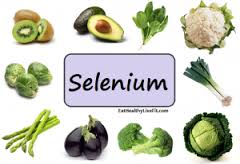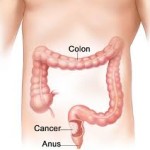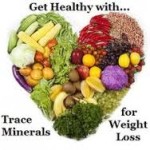 Selenium is a trace element or mineral that is essential for good health. However, it is only required in small amounts. The body uses selenium by incorporating it into proteins that are used as anti-oxidant enzymes. These proteins are called selenoproteins and they help to prevent cellular damage from free radicals.
Selenium is a trace element or mineral that is essential for good health. However, it is only required in small amounts. The body uses selenium by incorporating it into proteins that are used as anti-oxidant enzymes. These proteins are called selenoproteins and they help to prevent cellular damage from free radicals.
The role of antioxidants in the body is to protect the cells from free radical damage. These free radicals are the natural byproduct of oxygen metabolism that researchers have found contribute to the development of chronic diseases. Think of your cells as an apple that was recently sliced open. If you leave the apple on the counter for any length of time when you return the flesh of the fruit will have turned brown. This oxidation process is much like the damage that happens to cells by free radicals.
Some of the chronic diseases that have been linked to free radicals include cancer, heart disease and immune mediated illnesses such as lupus. These selenoproteins are also essential in the regulation of the thyroid hormone and play an important role in the function of the immune system. (1)
Researchers have found a role of selenium in cancer prevention in recent studies. Initial evidence from the Nutritional Prevention of Cancer trial suggests that supplementation will reduce the risk of prostate cancer but did not reduce the risk of lung, colorectal or basal cell carcinoma of the skin. (2)
There is good scientific evidence to point to the antioxidant properties of selenium as well as the prevention of Keshan disease, which is a cardiomyopathy and has been restricted to the areas of China where people have extremely low selenium levels. There have also been some preliminary research reports that the supplementation of selenium can improve asthma symptoms, may offer benefits for individuals with specific blood disorders and may play a role in the recovery from bronchitis and pneumonia caused by respiratory syncytial virus. (3)
Researchers and scientists believe that the major source of selenium in our diet is through plant foods. However, the amount of selenium that plants can deliver is based on the soil in which it was grown. The soil in Nebraska and the Dakotas have very high levels of selenium and those people who live in that region have the highest intake of selenium of others who live in the United States. (4)
For people who grow and eat their foods locally, such as individuals in China and Russia, they are at the mercy of the soil content in their area. In the United States, the food is often distributed across the country which helps individuals who live in geographic areas where the soil content is well in selenium.
 There is some selenium found in meat products because animals eat the grain and plants grown in selenium rich soil. Like all other vitamins or minerals, the content will vary depending upon the food. For instance, Brazil nuts have the highest concentration of selenium at 544 mcg per ounce as compared to cheddar cheese which has 4 mcg per ounce. Running a very distant second to Brazil nuts is tuna fish at 63 mcg per 3 ounces. Beef, cod, Turkey and chuck roast all hover around 30 mcg for 3 1/2 ounces of meat.
There is some selenium found in meat products because animals eat the grain and plants grown in selenium rich soil. Like all other vitamins or minerals, the content will vary depending upon the food. For instance, Brazil nuts have the highest concentration of selenium at 544 mcg per ounce as compared to cheddar cheese which has 4 mcg per ounce. Running a very distant second to Brazil nuts is tuna fish at 63 mcg per 3 ounces. Beef, cod, Turkey and chuck roast all hover around 30 mcg for 3 1/2 ounces of meat.
Selenium is often destroyed when the food is processed or refined. Other sources include brewer’s yeast, butter, garlic, sunflower seeds, raisins, walnuts, ginseng, onions and radishes.
The US recommended dietary allowance for adults is 80 to 200 mcg depending upon gender, adolescence and pregnancy. Selenium is a trace element and hypersensitivity has not been reported. We do know that toxicity can cause gastrointestinal symptoms, neuromuscular and psychiatric disturbances, liver dysfunction, kidney dysfunction and thyroid dysfunction. The level of selenium exposure that causes toxicity, however, is not known.
People in the United States may suffer from selenium deficiency if they also suffer from Crohn’s disease, surgical removal of part of the stomach or other severe gastrointestinal problems. This deficiency is caused by an impairment in the absorption of selenium. Individuals who have an iodine deficiency can also benefit from selenium supplementation. (5)
Before diagnosing yourself, it is important to seek the advice of your primary care physician. Chronic toxicity from over supplementation with selenium can cause significant side effects and in some cases, even death. Always consult your primary care physician prior to adding any supplementation to your current medical regimen so that you can also determine if there will be any interactions with any current drugs you are taking or any other underlying medical condition.
References:
(1) Australian and New Zealand Journal of Ophthalmology: The Role of Free Radicals in Disease
http://www.ncbi.nlm.nih.gov/pubmed/22426836
(2) Journal of the American Medical Association:Effects of selenium supplementation for cancer prevention in patients with carcinoma of the skin
http://www.ncbi.nlm.nih.gov/pubmed/8971064
(3) Linus Pauling Institute Oregon State University: Selenium
http://lpi.oregonstate.edu/infocenter/minerals/selenium/
(4) US Geological Survey: Selenium in Counties of the Conterminous States
http://tin.er.usgs.gov/geochem/doc/averages/se/usa.html
(5) Journal of Biological Chemistry: Cell death caused by selenium deficiency and protective effect of antioxidants.
http://www.ncbi.nlm.nih.gov/pubmed/12888577


Leave a Reply